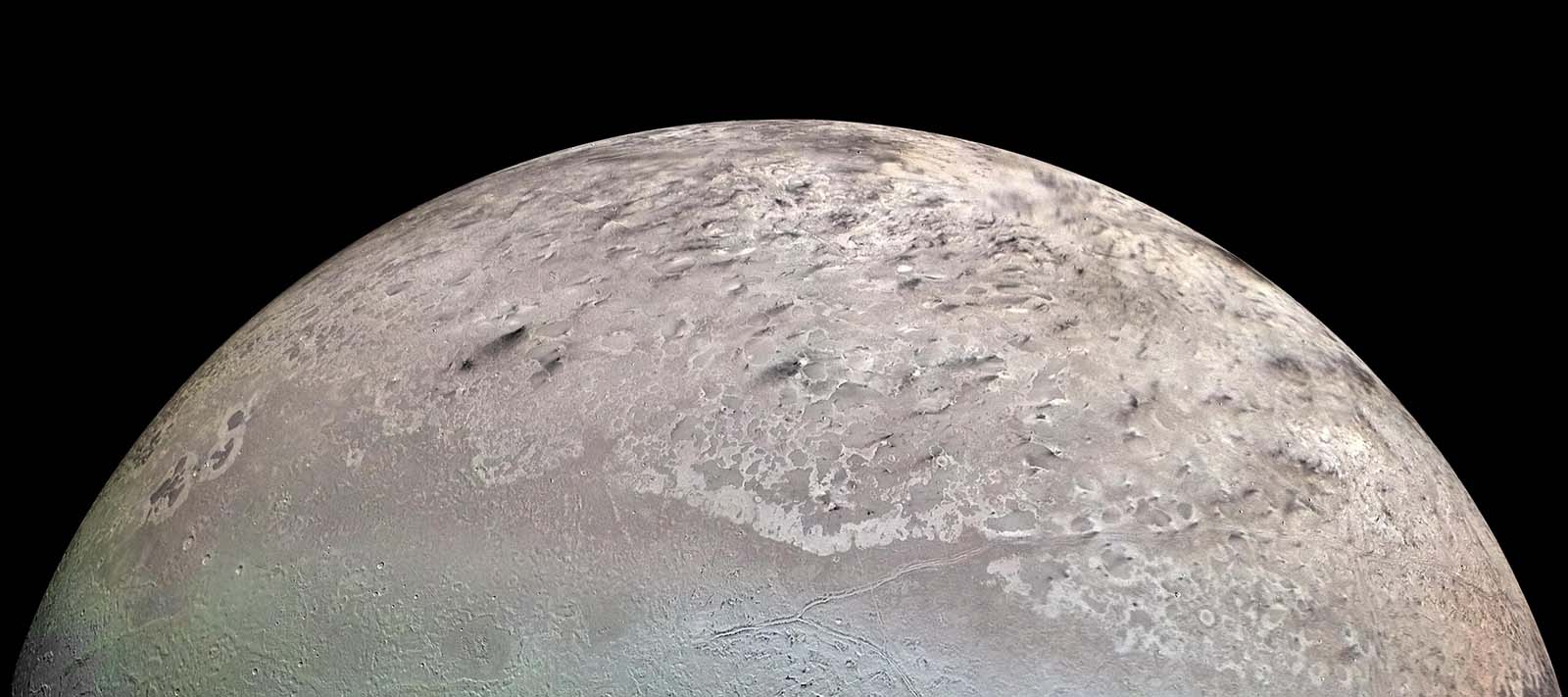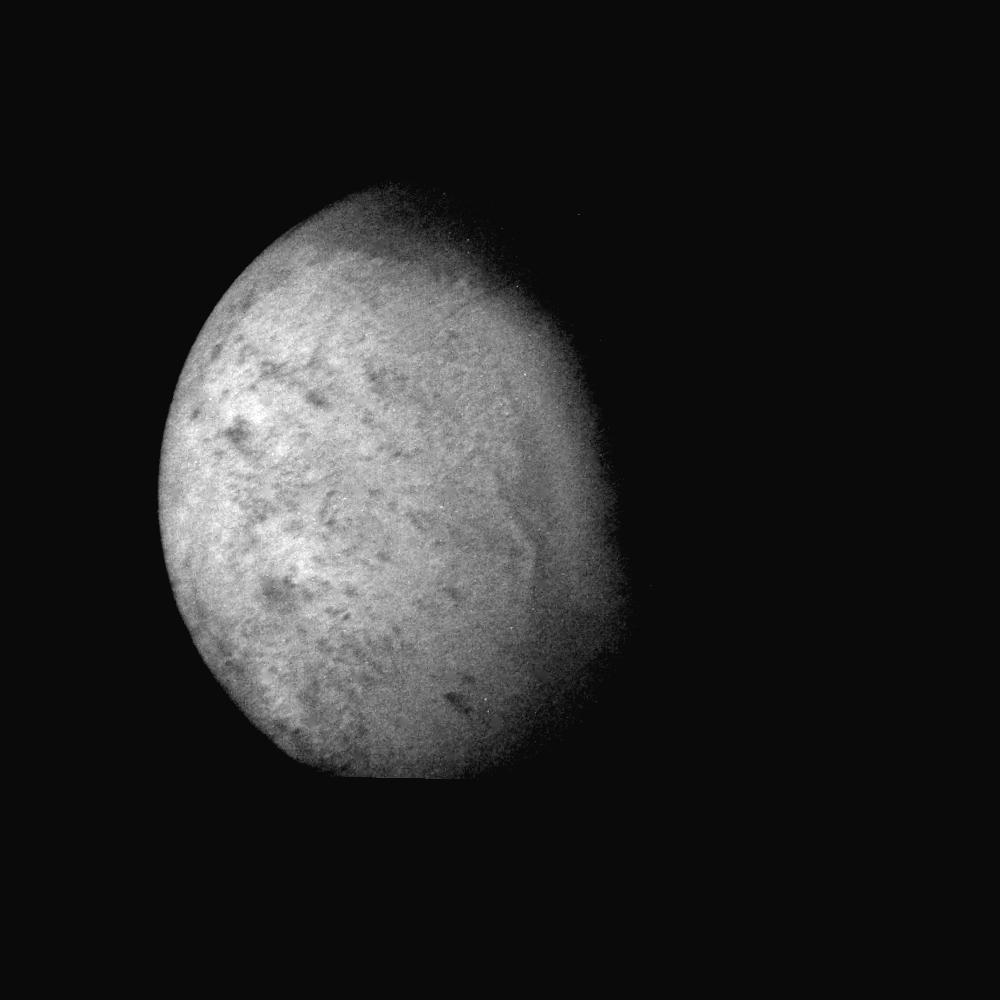Triton, a moon of Neptune
220,437 miles
1,682 miles
Triton is Neptune's largest moon with a diameter of just over 2,700 kilometres (1,680 miles). It's the seventh largest moon in the Solar System as is about four-fifths the size of Earth's Moon. It was discovered in 1846 by William Lassell and was the first moon to be found around Neptune. Unlike the major moons of the other planets in the solar system, Triton is classed as an irregular moon. It orbits Neptune in an opposite direction to the planet's rotation and it's thought that it may have been captured by Neptune rather than formed around it. It was quite possibly a planet or dwarf planet.
Triton is one of the coldest objects in the solar system, which is perhaps hardly surprising seeing as it orbits the most distant planet. Temperatures on the chilly moon are as low as -295° C (-391° F). Its surface is coated by a frost of frozen nitrogen. Voyager 2 discovered that Triton is a geologically active moon. Geysers on its surface erupt nitrogen gas which freezes and snows back down to its surface. Images of Triton show plumes of dark particles that have come from eruptions and drifted to its surface.

Triton is unique as it's the only major moon of any of the solar system's planets to travel in an opposite direction to its planet's rotation. Most planets, including Neptune, spin on their axis in an anti-clockwise (counterclockwise) direction! Large moons of each of the planets almost always travel around them in the same direction, as if they are travelling with the planet. Triton is the only exception and travels around Neptune in a clockwise direction. This kind of orbit is called a retrograde orbit.
Scientists believe that Triton's retrograde orbit means that it might not have originally formed as a moon around Neptune. A lot of moons formed from materials swirling around planets in their early formations. These types of moons are known as regular moons. The gravitational pull of planets enables them to attract objects, such as asteroids, that formed elsewhere in the solar system. If any of these objects enters into an orbit of the planet, it becomes one of its moons. Their orbital direction is determined by the direction they were travelling in before they got captured. These types of moons are called irregular moons, named as such because they didn't form along with the planet. Triton might have been a similar type of object, but instead of being an small asteroid, it may have been a dwarf planet like Pluto.
In Greek mythology, Triton is the son of the sea god Poseidon. The equivalent Roman god to Poseidon is Neptune. Triton is often depicted as a merman, with a fish-like bottom half and a human top half. He has the ability to calm the wind and waves with a conch shell trumpet. He'd also give his trumpet a blast to signify the arrival of Poseidon or other sea gods.
When William Lassell discovered Triton, he didn't give it a name. For a while, it was simply known as the satellite of Neptune. In 1880, a French astronomer called Camille Flammarion wrote the book Astronomie Populaire with the intention to make science accessible to the masses. In it, he proposed the name Triton for Neptune's moon, but it still took many decades until it became officially accepted. Since then, all other moons of Neptune have been named after Greek or Roman sea gods.






